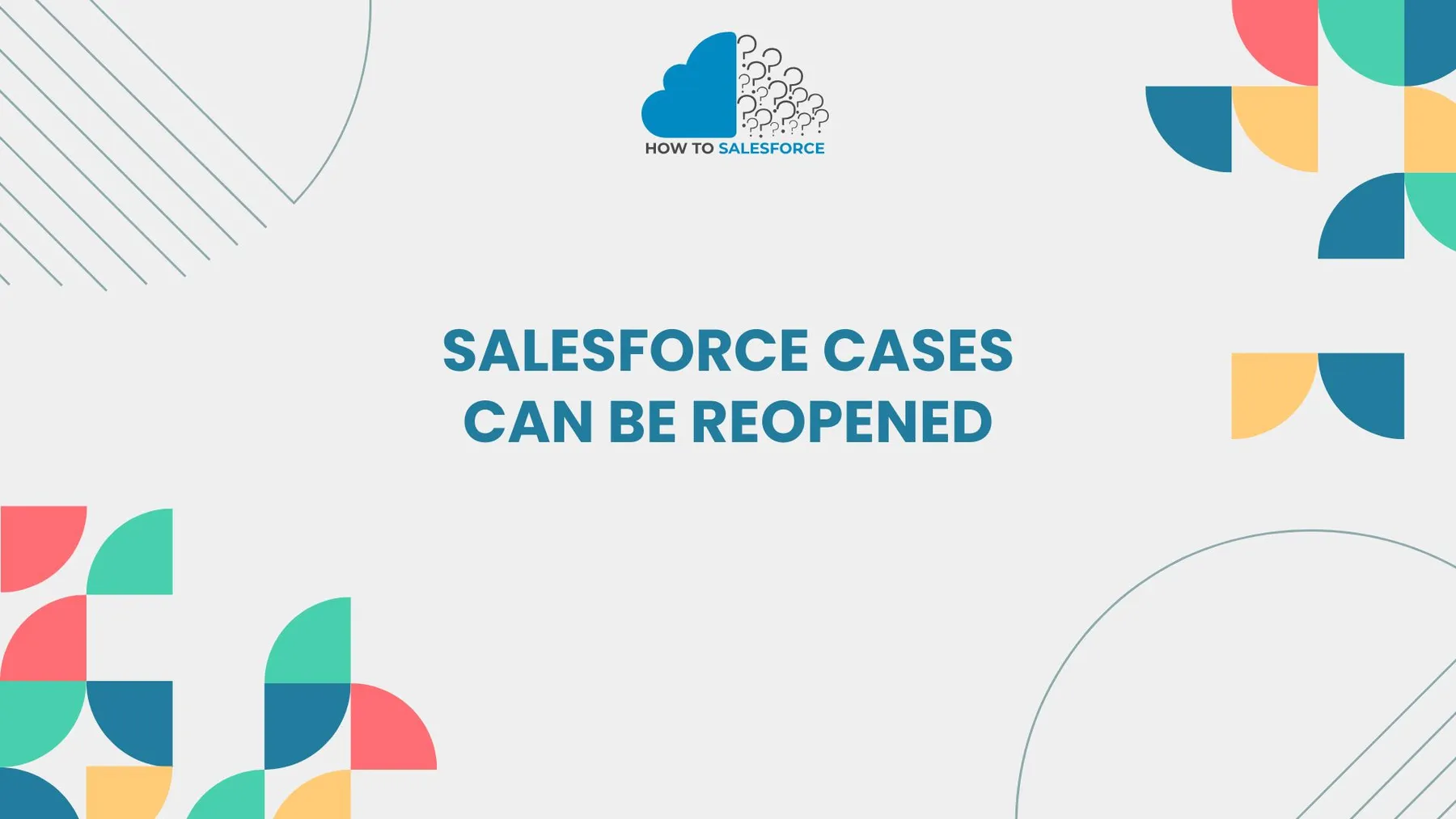Introduction
Reopening cases can fix unresolved issues in Salesforce, giving you more freedom when handling customer support requests. The procedure is simple and enhances the support experience in general. This article will discuss the reasons behind case reopenings and the advantages this feature offers clients and companies.
Please read my other blog: Highlight Panel Salesforce
What Are Salesforce Cases
Customer service requests are tracked and managed using Salesforce cases. Whenever a problem arises, a case is opened in Salesforce to track the progress of a customer’s request. A case may include a billing question, a product return, or a technical support inquiry.
Features of Salesforce Cases
- Tracking: Salesforce cases assist companies in monitoring client concerns.
- Ownership: Each case has an owner responsible for resolution.
- Status: Cases move through the New, In Progress, and Closed stages.
- Automation: Salesforce can automate case workflows based on triggers and actions.
Salesforce cases are necessary to handle customer issues properly. They allow support teams to monitor progress, react quickly, and ensure that every step is completed.
Why Can Salesforce Cases Be Reopened
Customers may occasionally require additional help after a case has been closed. This might occur if a problem reappears, the fix is inadequate, or the client inquires more. Support teams can quickly address these issues by reopening a case.
Reopening cases in Salesforce is an essential feature because:
- Improved Customer Satisfaction: Reopening a case increases customer trust and addresses unresolved issues.
- Efficiency: Rather than starting from scratch, teams can swiftly revisit existing cases.
- Case History: The complete case history is still in place to maintain continuity.
Consumers value companies that can address their issues again and are responsive. Salesforce’s ability to reopen cases allows support teams to ensure that no problem is left unresolved.
How Can Salesforce Cases Be Reopened
Reopening a case in Salesforce is an easy procedure. If the problem continues or the client has additional inquiries about the prior case, the user may reopen the case. This is how it operates:
Check Case Status
Verify the status of a case before reopening it. A case marked as Closed can be reopened. Other statuses, like New or In Progress, indicate that the case is still open and does not require reopening.
Reopen the Case
Users can reopen a case in Salesforce with just a few clicks and change it from Closed to an appropriate active status, like In Progress. You should also update the case details to reflect new information.
Notify the Customer
As soon as the case is reopened, inform the client of the next steps. Ensure they know that the matter will be reviewed and that more information is anticipated.
Update Case Details
Add the most recent details, such as client feedback, answers, and any steps taken to address the problem. Previous interactions are still visible because Salesforce maintains the case history.
Benefits of Reopening Cases in Salesforce
Businesses and their clients can gain a great deal from reopening cases. Some of the benefits are listed below:
Enhances Customer Service
Reopening cases enables companies to offer their clients ongoing assistance. Reopening a case allows for prompt attention when problems resurface after it has been closed. This improves customer satisfaction by cutting down on problem-solving delays.
Maintains Case Continuity
Reopening a case guarantees the preservation of all prior correspondence and data. This allows the support staff to fully comprehend the problem without starting from scratch. Continuity is essential for delivering precise and prompt solutions.
Increased Efficiency
Reopening an existing case instead of opening a new one reduces duplication of effort and saves time when dealing with reoccurring issues. The case history is easily accessible to support staff, allowing them to get to work solving the problem.
Better Data Tracking
All related data is kept in the system when a case is reopened. This guarantees that companies have comprehensive records of their interactions with customers. These documents can spot patterns, reoccurring problems, and areas that need work over time.
Faster Resolution
Reopened cases can be handled more quickly than new ones. The agent can access and fix the issue’s history without waiting for a new case to be processed.
Conditions for Reopening Cases in Salesforce
Reopening cases in Salesforce is helpful, but there are some restrictions on when and how this can happen. These consist of:
Case Closed Status
Salesforce cases marked as “Closed” can generally be reopened. However, updating cases with different statuses or using a workflow manually might be necessary.
User Permissions
User permissions determine whether a case can be reopened. Some users may not be able to modify a case’s status. Administrators can set up permissions to guarantee that only authorised users can reopen closed cases.
Business Rules and Workflow
Certain organisations may have policies prohibiting reopening cases under particular circumstances or after a predetermined time. For instance, a case might not be permitted to reopen if closed for an extended period.
Case Type
Reopening restrictions may apply to specific case types. For instance, there might be stricter guidelines regarding reopening in cases about compliance or law.
Best Practices for Reopening Salesforce Cases
The following best practices should be taken into account when reopening cases in Salesforce:
Review the Case History
Take a close look at the case history before reopening a case. Knowing what has already been discussed or decided can help you make well-informed decisions.
Communicate Clearly with the Customer
Effective communication is crucial. When a case is reopened, always inform the customer and outline the next steps.
Use Case Escalation When Needed
If the problem cannot be fixed immediately, it might be necessary to escalate the case to higher-level support in some circumstances. Ensure the right teams are involved if the case requires additional expertise.
Update Case Fields
Before reopening the case, make sure all pertinent information has been added. This will help the support staff better comprehend the problem and prevent misunderstandings.
Monitor Case Resolution
After reopening the case, monitor it closely to ensure it is settled quickly. Follow up with the customer to ensure their needs are met.
Case Reopen Automation in Salesforce
Salesforce provides Process Builder and Flow Builder, two automation tools, to help expedite the case reopening procedure. These tools can automatically reopen cases based on predetermined parameters, like client feedback or a persistent problem.
For instance, if a client sends an email or web form requesting a follow-up, the case may be automatically reopened. Automation can guarantee that no problem remains unsolved by reducing human error and saving time.
Challenges When Reopening Cases in Salesforce
While reopening cases in Salesforce offers several benefits, there are some challenges to consider:
Data Integrity Issues
When a case is reopened, important information may be lost or overwritten. Ensure no data is inadvertently lost and all case fields are updated accurately.
Increased Case Volume
Reopening cases frequently could signal deeper problems that need to be fixed. Maintaining customer satisfaction and preventing case overload are benefits of handling reopened instances well.
Complex Business Rules
Intricate policies or procedures in certain organisations may restrict when and how cases can be reopened. It is crucial to comprehend these guidelines and ensure Salesforce appropriately enforces them.
Conclusion
Salesforce cases can be reopened when problems continue or new information becomes available. This feature assists companies in resolving all issues and maintaining continuity of customer service. Reopening cases allows businesses to increase customer satisfaction, boost productivity, and better track service data.


